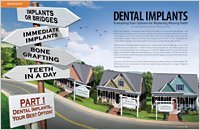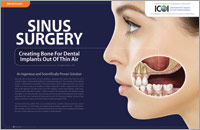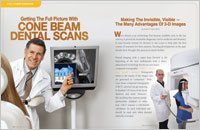The best way to replace missing teeth!
Dental implants are the closest you can get to healthy, natural teeth. They will allow you to confidently eat, smile, laugh, talk, play and enjoy all of your regular activities of everyday life without thinking about your teeth. Strong and stable, a dental implant restores a lost tooth so that it looks, feels, fits and functions like a natural tooth. Other options can lead to bone deterioration, and may interfere with eating, smiling, speaking and other activities of everyday life.
Dental implants are often the best treatment for missing teeth. When a damaged or decayed tooth is removed, both the visible part of the tooth, called the crown, and the root are lost.
A dental implant is placed in the jawbone so that it can fuse with your natural bone and become a strong and sturdy foundation for replacement teeth. Implants can be used to replace an individual tooth or for an implant-supported bridge or denture containing multiple teeth. You brush, floss and visit your dentist for regular check-ups and cleanings, same as you would to care for a natural tooth.
Given the versatility of dental implants, you can replace anywhere from one missing tooth to an entire arch of missing teeth with life-like, durable prosthetics.
How do dental implants work?
After meeting with Dr. Natalie Jackson to develop your treatment plan, the delivery of one or more dental implants is a straightforward process:
- We begin by acquiring a 3D image of your mouth with the Sirona Galileos Comfort Plus, which allows us to diagnose and plan the most effective treatment option for your situation.
- We then create a customized surgical guide that will enable a quick, precise implant surgery experience for you.
- The dental implant, usually a cylindrical and/or tapered post made of titanium, is placed surgically into the jawbone.
- As you heal, your implant will osseointegrate, or fuse with, your natural jawbone, with the two growing together to form a strong and long-lasting foundation for your replacement teeth. This healing process usually takes 3-5 months while you proceed with your everyday life.
- Once the implant bonds with the jawbone, a small connector – called an abutment – is placed on top of the dental implant to connect the implant to the replacement tooth or teeth.
Examples of dental implant solutions
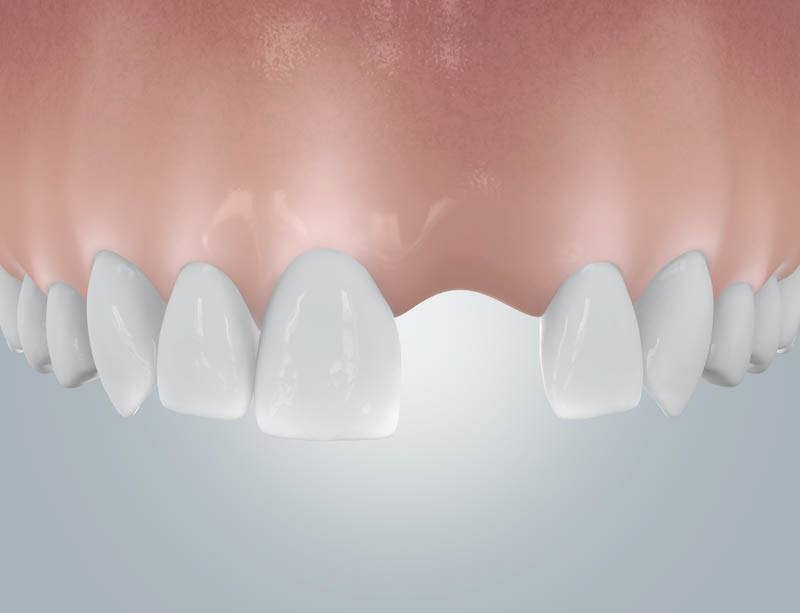
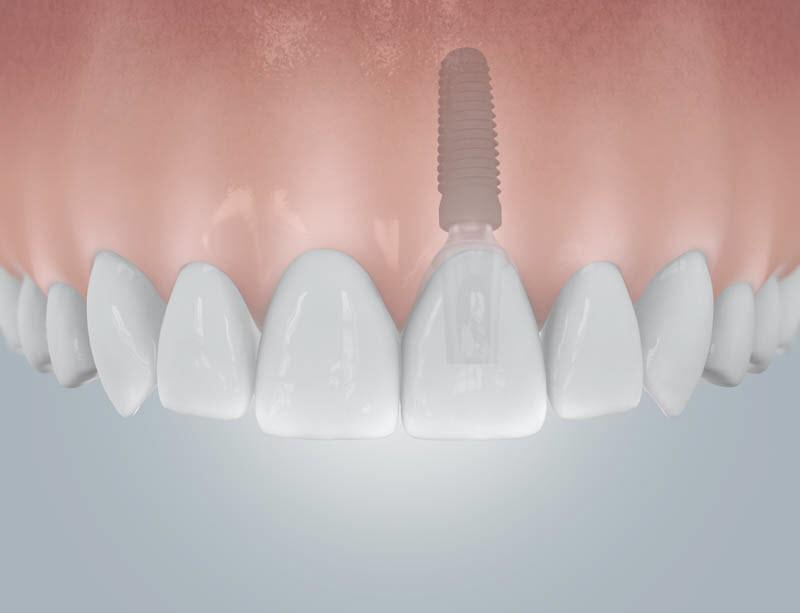

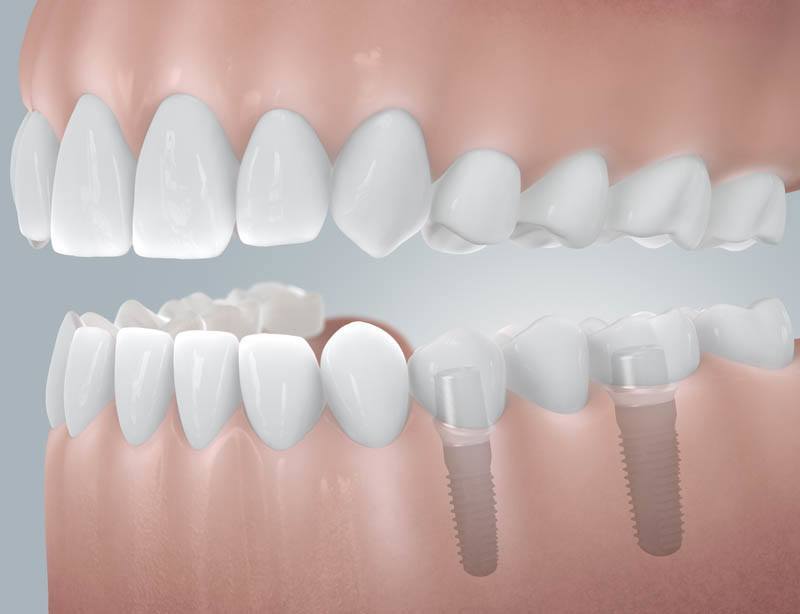
Should I choose Dr. Jackson for my implants?
Begin with the end in mind
3D diagnosis with restoration-driven planning facilitates ideal dental implant placement
Precision engineering
Computer-aided guided surgery reduces your time in the chair and enhances predictability
Peace of mind
Little to no post-operative discomfort with a long-term success rate of 97%
Convenience
Treatment delivered from start to finish by the same provider in one location
Begin with the end in mind
No interest (if paid in full within promotional period) financing available for up to 24 months for qualified applicants through either CareCredit or Lending Club Patient Solutions
How can dental implants help me?
Enjoy life without worrying about your teeth
No need to stay home or feel uncomfortable in public, embarrassed because your smile looks different, or worrying that missing teeth will limit your ability to join in the fun or that removable dentures or tooth-supported replacement teeth will loosen or fall out when you talk, eat or laugh. Teeth restored with dental implants are teeth that let you, not your teeth, lead your life.
Eat your favorite foods
Taste and enjoy the foods you love without hesitation. You can bite naturally, eat virtually anything you want and, unlike removable dentures that can feel uncomfortable, you can experience the full taste of the food you eat with dental implants, too.
Keep your teeth in your mouth - not in a cup
Dental implants allow you to keep your teeth where they belong – in your mouth. And no more worrying that your dentures might slip or fall out. Brush, floss and care for teeth that have been replaced using dental implants exactly the way you would natural teeth.
Protect healthy bone
Leaving empty spaces in your mouth after losing one or more teeth can lead to additional health issues, such as the loss and deterioration of some of your jawbone. When it is not being used to support a natural tooth, the jawbone deteriorates, losing its strength and firmness. Dental implants are the only dental restoration option that preserves and stimulates natural bone, actually helping to stimulate bone growth and prevent bone loss.
Built to last, a long-term solution
Traditional, tooth-supported dental bridges only last five to seven years, and with proper care often more than 10 years, but at some point they may need to be replaced. While dental implants may need periodic adjustments, they can last a lifetime when properly placed and cared for over time.

